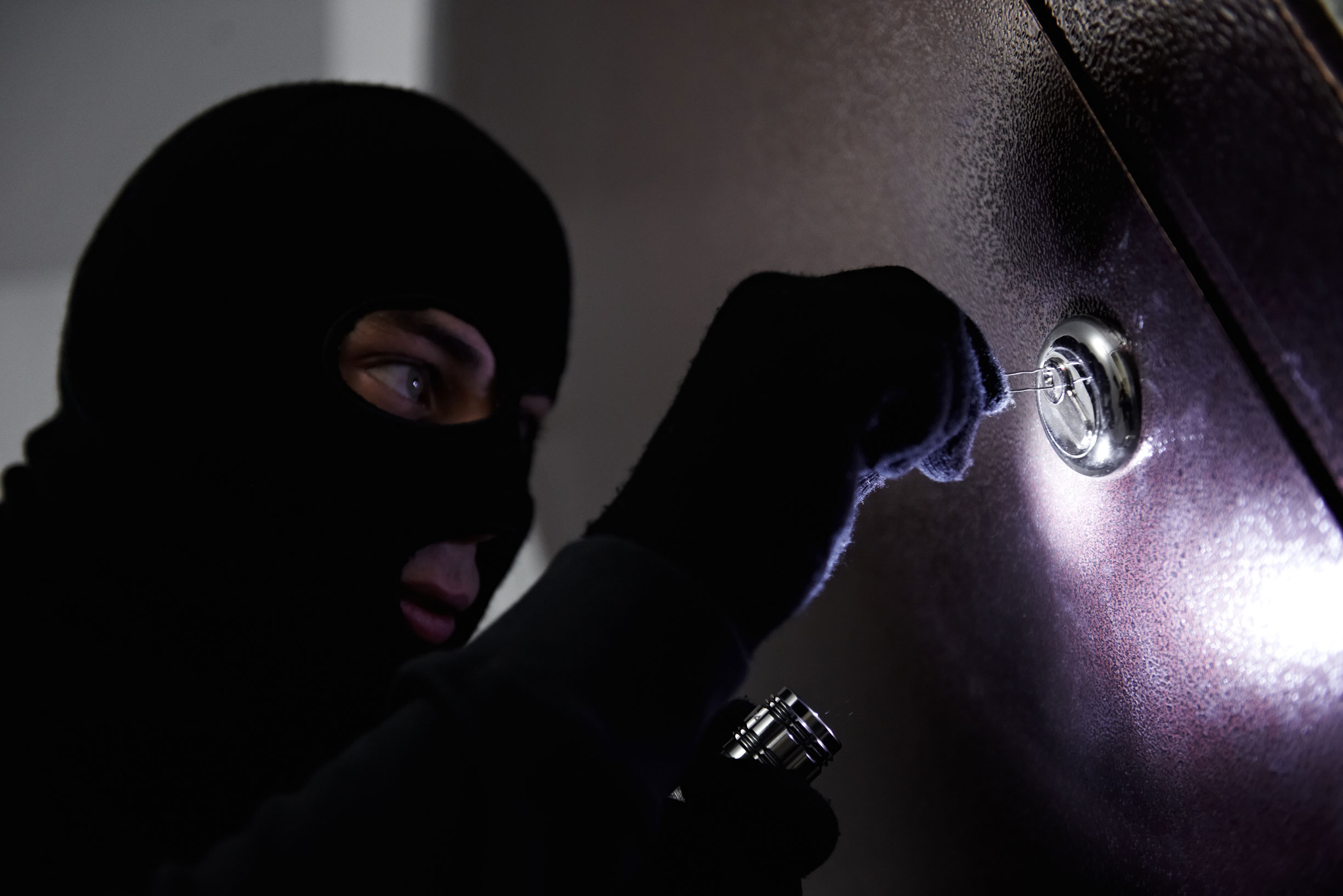Bail Bond for Felony Burglary PC 459
If you or a loved one find yourselves in a difficult situation, we understand the urgency and stress that comes with it. At Angels Bail Bonds, we specialize in providing the support and assistance needed to secure bail for felony burglary charges.
Learn the basics about the bail process for a felony burglary charge, and then contact Angels Bail Bonds today. Let us be your trusted partner in navigating the bail process for felony burglary charges. We are here to help you regain your freedom and prepare for your legal journey.
At Angels Bail Bonds, we specialize in providing the support and assistance needed to secure bail for felony burglary charges. However, it’s essential to know that if you’re also facing additional charges such as deadly weapon assault or aggravated assault that results in serious bodily injury, the legal landscape becomes far more complex and the bail amount may significantly increase. In such cases involving an alleged victim and serious injury, consulting a skilled criminal defense lawyer is crucial for understanding the charges, the evidence, and formulating a strategy to mitigate consequences. Let us be your trusted partner in navigating the bail process, even as you prepare for the legal challenges that lie ahead.
What is bail?
Bail in California refers to the amount of money or property that a defendant or their surety (a person responsible for the defendant’s appearance in court) must deposit with the court to secure the defendant’s release from custody while awaiting trial.
The purpose of bail is to ensure that the defendant appears in court for all scheduled hearings and does not flee before the trial. A bail schedule or table determines bail amounts, but a judge can deviate from the schedule based on various factors, including the severity of the offense, the defendant’s criminal history, and if the defendant is a flight risk. If the defendant fails to appear in court, the bail is forfeited, and a warrant may be issued for their arrest.
What are bail bonds?
When you find yourself in a situation where you can’t afford to pay for your bail, bail bonds might be the solution for you. A bail bondsman, who a bail bond company employs, will charge you a fee in exchange for providing the payment. Bail bond companies in California charge only 10% of the total bail amount to post-bond for a defendant. So, if the bail amount is $20,000, the bondsman will charge $2,000 instead of the full amount. While this may still seem like a lot of money, it’s much more affordable than paying the entire bail amount, especially on extremely high bail amounts for some serious felonies.
Those rates can be as high as 20% for some immigration and federal charges because these rates are set by law, and all bail companies must charge the same amount. Despite the costs, using a bail bondsman can be a lifesaver for those who cannot afford to be released from custody on bail.
What happens at a bail hearing?

The amount of bail is normally set at the person’s initial court appearance, often known as the arraignment stage or pre-trial detention. A judge can either release a person on their own recognizance (OR) with a promise to appear in court at a later date or deny their OR and impose bail.
If the charges are infraction offenses or even some misdemeanor offenses—such as a DUI with no accident injuries or significant property damage— the person will usually be released without bail after being arrested. More serious felony charges, like assault with a deadly weapon or even murder, will not have OR as an option and will only be released from custody on bail.
You must pay the bail amount or post a bail bond on the bail schedule. An arresting officer might ask for a higher bail amount than what the bail schedule suggests.
What Factors Influence a Defendant’s Bail Amount?
The bail bond process starts when a defendant is in front of a judge to determine bail. Then several factors are put into play, including the severity of the crime, criminal history, whether the defendant is a flight risk, community ties, financial resources, their potential danger to public safety, and even mental health are considered when determining bail amount.
The bail schedule further gives guidance for all criminal charges, with the judge having some leeway in the specific amounts, as mentioned. And even if they’re allowed out on bail, the defendant might have to be placed under house arrest, be prohibited from owning any deadly weapons or placed under electronic monitoring.
Have you been charged with criminal Felony Burglary PC 459?
If you’ve been charged with a criminal offense like felony burglary, you or a loved one must contact the experts at Angels Bail Bonds immediately. Our team of bail bondsmen and criminal defense lawyers provide assistance during pre-trial detention at no extra cost, including nationwide.
What is Felony Burglary?
According to California Penal Code Section 459, the crime of burglary is defined as entering a property, structure, or locked vehicle with the criminal intent of committing either grand larceny (grand theft), petit larceny (petty theft), or any other felony offense. While it’s easier to prove criminal intent and burglary if there’s evidence of forced entry, it doesn’t matter if there’s no forced entry or if the home, car, truck or even storage container is unlocked. As long as a person had the intent to commit a crime or felony offense, it’s burglary.
The definition of burglary can also include a commercial structure, but only in cases where the value of the stolen goods in the commercial building was more than $950 or if the illegal entry into the building and the intent of theft was committed outside of business hours. Otherwise, you would be charged with shoplifting, defined as petty theft (stealing less than $950 worth of goods) when entering a commercial building.
While long, PC 459 has a comprehensive and crucial list of what an inhabited structure that would result in a residential burglary charge for a person illegally entering it with intent to commit petty theft, grand theft, or other felonies:
“..any house, room, apartment, tenement, shop, warehouse, store, mill, barn, stable, outhouse or other building, tent, vessel, as defined in Section 21 of the Harbors and Navigation Code, floating home, as defined in subdivision (d) of Section 18075.55 of the Health and Safety Code, railroad car, locked or sealed cargo container, whether or not mounted on a vehicle, trailer coach, as defined in Section 635 of the Vehicle Code, any house car, as defined in Section 362 of the Vehicle Code, inhabited camper, as defined in Section 243 of the Vehicle Code, vehicle as defined by the Vehicle Code, when the doors are locked, aircraft as defined by Section 21012 of the Public Utilities Code, or mine or any underground portion thereof […] As used in this chapter, “inhabited” means currently being used for dwelling purposes, whether occupied or not. A house, trailer, vessel designed for habitation, or portion of a building is currently being used for dwelling purposes if, at the time of the burglary, it was not occupied solely because a natural or other disaster caused the occupants to leave the premises.”
Even entering another room within a larger building you are allowed to be in can constitute burglary if you entered the room with criminal intent, like stealing someone else’s property or goods.
Burglaries are wobbler crimes in California, meaning they can be charged as misdemeanors or felonies depending on the circumstances, but all cases of residential burglary will be charged as a felony, as well as some cases of commercial burglary.
Types of Felony Burglary Charges in California

Burglary is entering an inhabited structure with the intent of committing a theft crime or felony crime or a commercial structure with the intent of stealing more than $950 worth of goods or when entering after business hours with criminal intent.
California law first divides burglary into two degrees. Burglary in the first degree is residential burglary, while burglary in the second degree is all other types of structure, commercial or business.
Residential burglary
Under California Penal Code 459 PC, residential burglary will always be considered a felony. It’s the type of felony burglary that takes place in a structure where the victim resides, as opposed to a commercial establishment. Other important points in residential burglary:
- The victim does not have to be at home at the moment or even occupying it full time at the moment of entry into building.
- As long as it’s private property and a residential structure that’s meant to be private and secure, burglary laws apply.
- The perpetrator does not need to be fully within the structure and is considered to have entered the building simply by touching the outer boundary of it, like a window or door, or attempting to climb a wall, for example.
Commercial burglary
Commercial burglary, also covered by California Penal Code 459 PC, can be charged as either a misdemeanor or a felony. This is when a person enters a commercial structure store or business establishment with the intent to commit a crime inside. For it to not be considered the crime of shoplifting, commercial burglary has to involve more than $950 in stolen goods or be carried out outside of business hours.
Custodial Institution Burglary
Compared to commercial burglary and residential burglary, this type of theft crime is rare but worth mentioning. It is a theft crime carried out in a jail or correctional institution “with the intent to steal items of use or convert for use as a weapon, escape tools, or intoxicating drugs.”





